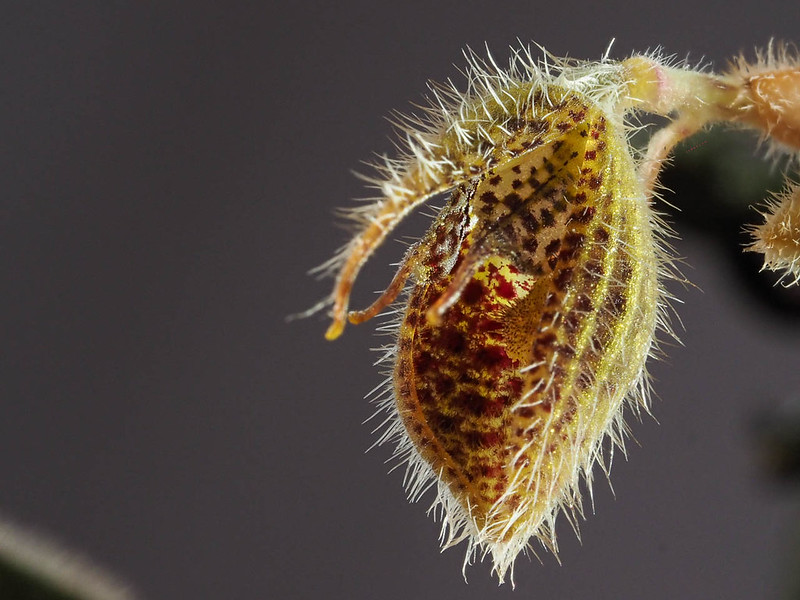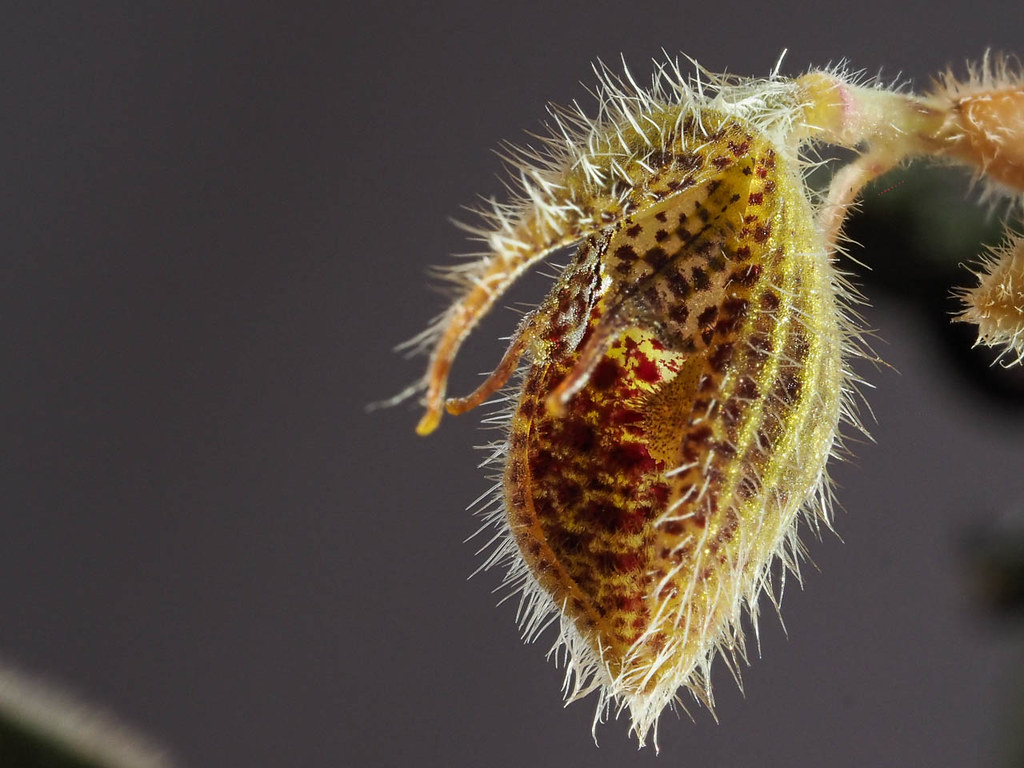 |
| The large boat shaped structure (bottom side of the flower) is the synsepal. |
Once you see the photos of the two species, they are fairly distinct. Note that photos of IOSPE are correctly labelled (D. hirsutissima and D. lasiocampa), but photos of D. hirsutissima in Swiss Orchid Foundation (you can search in this link) appear to be mislabelled.Here is the summary of the differences described in Medina and Pupulin (2010).
- D. hirsutissima. large plant and flower size. Synsepal length about 2cm. Flower (especially synsepals) more open (somewhat more similar to synsepals of Restrepia), and synsepal is not as boat-shaped as D. lasiocampa. The stem between the base of the flower and the leaf (peduncle) is short. Leaf has slivery stripes; middle part and edges are green, and there are two silvery stripes between them (see Marni's photos in this thread).
- D. lasiocampa smaller plant and flower size. Synsepal length about 1cm. Synsepal is boat-shaped. long peduncle. No stripes on the leaf.
 |
| Top sides of the leaves don't have the silvery stripes, and they are more homogeneous green. |
D. lasiocampa is from Southern Ecuador, and it is sympatric with D. hirsutissima in some area. D. lasiocampa is found at about 1700m (5600ft) elevation, and fully exposed to the sun light (Median and Pupulin 2010). My plant seems to be happier when the temperature is cooler; max/min of 21/13C (=70/55F). It seems to do OK with weak to moderate amount of light, but I haven't tried with higher light. When it flowered first time, the flower wasn't opening much, but this year, it opened normally.
 |
| Lip and column |
Luer, C. 1988. Icones Pleurothallidinarum V: Systematics of Dresslerella and Scaphosepalum (MSB 26), Missouri Botanical Garden Press. (link to the publisher)
Luer, C. 2005. Icones Pleurothallidinarum XXVII: Dryadella and Acronia section Macrophyllae-Fasciculatae (MSB103), Missouri Botanical Garden Press. (link to the publisher)
Medina, H. and F. Pupulin, 2010. A note on genus Dresslerella, Orchid Digest, April, May, June: 60-67. (link to PDF).
Medina, H. and F. Pupulin, 2010. A note on genus Dresslerella, Orchid Digest, April, May, June: 60-67. (link to PDF).


Comments
Post a Comment